Photo

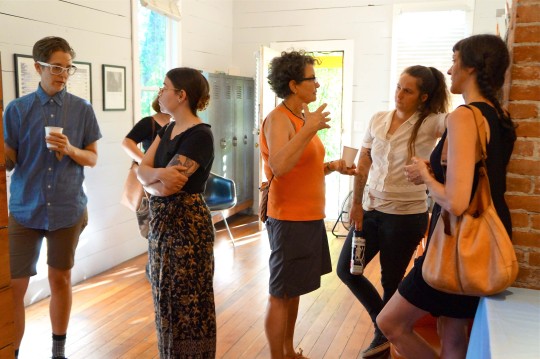

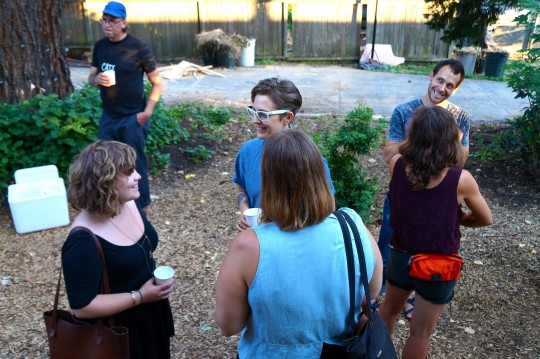
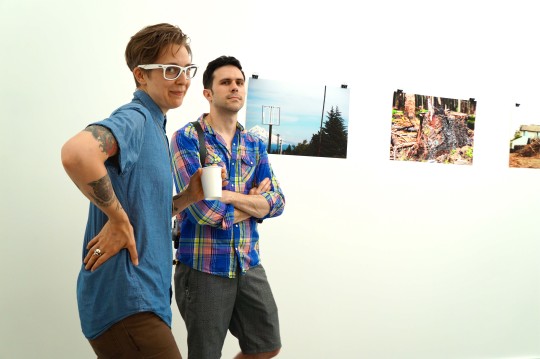
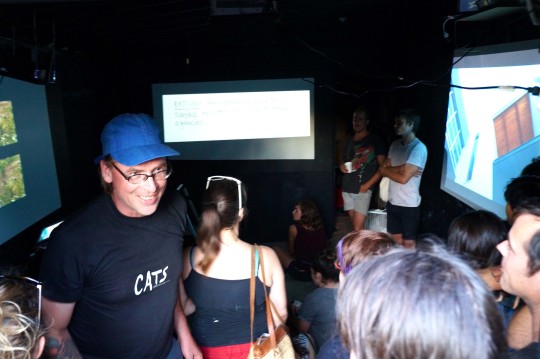

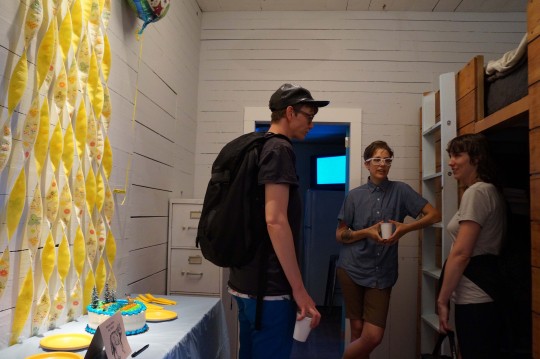
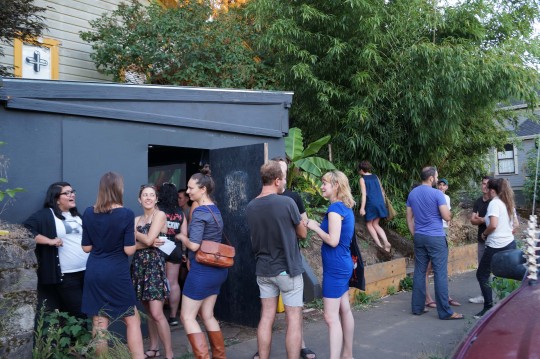

#tbt to Environmental Impact Statement opening!
#tbt#surplusspace#EIS#EISopening#environmentalimpactstatement#surplus#artshowsinhouses#unconventionalartspace
4 notes
·
View notes
Link
Documentation of Environmental Impact Statement’s exhibition currently up at Surplus Space.
#Environmental Impact Statement#leifjlee#Jodi Darby#Jodie Cavalier#Gary Wiseman#Lisa Schonberg#Amy Harwood#Heather Treadway#Danielle Ross#Alison Clarys#Sam Pirnak
2 notes
·
View notes
Text
Next up at Surplus Space: Environmental Impact Statement!

Eight Mile Before
As a curator-in-residence at Surplus, the Environmental Impact Statement collective will take the opportunity to engage the local community with the work of EIS artists and their concerns with land use, threatened wild places, Pacific Northwest aesthetics, and Oregon public land use practices. EIS will hold events throughout the course of the exhibit that engage the public. These events will include readings of EIS' writers' work, performances, and discussions.
EIS's focus on community and sustainability creates an exciting partnership with Surplus Space's neighborhood base. To be a good neighbor is to be aware of one’s place in the world. A good neighbor has an awareness and respect to the shared spaces they inhabit. Such as, their immediate surroundings where they live, the larger area that exists near by, and radiating outward. Being a good neighbor is a willingness to knowing where you live, its history, the people, and their stories. EIS acts as a good neighbor by providing space to make our community more aware of the threats to the surrounding wild places in their larger neighborhood, such as the Mt. Hood National Forest.

Eight Mile After
Environmental Impact Statement exhibition and events at Surplus will feature work from artists Danielle Ross, Heather Treadway, Sidony O’Neal, Jodi Darby, Jodie Cavalier, Daniela Molnar, Alison Clarys, and project directors Lisa Schonberg, Leif J Lee, and Amy Wheeler Harwood.
More information here.
2 notes
·
View notes
Link
Surplus' director, Gabe Flores, chats with Oregon Arts Watch about our current effort to crowd-source funds to create grants for artist interested in creating their own resident-based curatorial project.
1 note
·
View note
Text
irl///onlineonly

Opening @ Surplus Space
2/28/15 6 -9pm
irl///onlineonly is a group show curated by Katie Holden featuring works by Portland State University's current MFA candidates.
In conjunction with showing each artist's work, Holden has approached the artists to be individually interviewed. Through a series of books the cohort voiced their opinions on the effects or non-effects digital life has on their art practices. These interviews act as a preface to a printed archive of their internet postings from the last 3 months.
Holden asked the artists to consider the question, "What is real life?" as well as how they feel about the now ubiquitous acronym in relation to exhibiting and sharing their work.
Participating MFA candidates: Jea Alford, &&&, Kensey Anderson, Sarah-Jasmine Calvetti, Chris Freeman, Hyunju Kim, Kyle Lee, Emily Lewis, Pam Minty, and Amanda Wilson.
______________________
irl///onlineonly is part of Comparative Studies, a month long program at Surplus Space where we've invited a different academic institution each week to curate the house.
February 28th - Portland State University MFAs
irl///onlineonly: RSVP HERE
March 6th - Lewis & Clark College
Achieving and Undermining Too Many Dinner Parties RSVP HERE
March 14th - Oregon College of Art and Craft
March 20th - Pacific Northwest College of Art
1 note
·
View note
Text
Call for Guest Curators!
Surplus Space is accepting proposals for three guest curators for 2015. Each month of our final year we’re inviting a different guest curator to program Surplus Space. Our hope is that with an open call we’ll receive a diverse selection of proposals to fill our remaining three 2015 slots. All guest curators will receive a $300 honorarium.
The application closes March 31st.
Below are the three slots we’re seeking to program:
June 27th - July 17th
July 25th - August 14th
October 31st - November 20th (Surplus Space's final show)
To apply follow the link: Guest Curator Application
#CallforCurators#CuratorCall#CallforArtists#ArtistCall#ArtistHonorarium#ArtOpportunity#AlternativeSpace#SurplusSpace
10 notes
·
View notes
Text
Neighborhood Gallery Grants
Surplus Space is seeking funds to create grants to offer to individuals interested in creating their own exhibition projects. We're using Indiegogo to crowdsource donations to create five $900 grants to assist in the development of five new artist-run exhibition spaces based out grantees' homes. All donations will go directly to help fund the Neighborhood Gallery Grant.
3 notes
·
View notes
Video
youtube
Pussy Riot - Putin will teach you how to love / Путин научит тебя любить Родину
0 notes
Text
RIOT GRRRL MANIFESTO
BECAUSE us girls crave records and books and fanzines that speak to US that WE feel included in and can understand in our own ways.
BECAUSE we wanna make it easier for girls to see/hear each other's work so that we can share strategies and criticize-applaud each other.
BECAUSE we must take over the means of production in order to create our own moanings.
BECAUSE viewing our work as being connected to our girlfriends-politics-real lives is essential if we are gonna figure out how we are doing impacts, reflects, perpetuates, or DISRUPTS the status quo.
BECAUSE we recognize fantasies of Instant Macho Gun Revolution as impractical lies meant to keep us simply dreaming instead of becoming our dreams AND THUS seek to create revolution in our own lives every single day by envisioning and creating alternatives to the bullshit christian capitalist way of doing things.
BECAUSE we want and need to encourage and be encouraged in the face of all our own insecurities, in the face of beergutboyrock that tells us we can't play our instruments, in the face of "authorities" who say our bands/zines/etc are the worst in the US and
BECAUSE we don't wanna assimilate to someone else's (boy) standards of what is or isn't.
BECAUSE we are unwilling to falter under claims that we are reactionary "reverse sexists" AND NOT THE TRUEPUNKROCKSOULCRUSADERS THAT WE KNOW we really are.
BECAUSE we know that life is much more than physical survival and are patently aware that the punk rock "you can do anything" idea is crucial to the coming angry grrrl rock revolution which seeks to save the psychic and cultural lives of girls and women everywhere, according to their own terms, not ours.
BECAUSE we are interested in creating non-heirarchical ways of being AND making music, friends, and scenes based on communication + understanding, instead of competition + good/bad categorizations.
BECAUSE doing/reading/seeing/hearing cool things that validate and challenge us can help us gain the strength and sense of community that we need in order to figure out how bullshit like racism, able-bodieism, ageism, speciesism, classism, thinism, sexism, anti-semitism and heterosexism figures in our own lives.
BECAUSE we see fostering and supporting girl scenes and girl artists of all kinds as integral to this process.
BECAUSE we hate capitalism in all its forms and see our main goal as sharing information and staying alive, instead of making profits of being cool according to traditional standards.
BECAUSE we are angry at a society that tells us Girl = Dumb, Girl = Bad, Girl = Weak.
BECAUSE we are unwilling to let our real and valid anger be diffused and/or turned against us via the internalization of sexism as witnessed in girl/girl jealousism and self defeating girltype behaviors.
BECAUSE I believe with my wholeheartmindbody that girls constitute a revolutionary soul force that can, and will change the world for real.
"The Riot Grrrl Movement began in the early 1990s by Washington State band Bikini Kill and lead singer Kathleen Hanna.The riot grrrl manifesto was published 1991 in the BIKINI KILL ZINE 2"
0 notes
Link
Riot Grrrl was an underground feminist movement that began in the early nineties, which was closely tied to punk music, radical politics, and a DIY aesthetic. Riot Grrrl activism involved meetings,...
0 notes
Text
Split/Frame
Split / Frame
Niki Korth / Kiki North
AGGREGATE SPACE
OAKLAND, CALIFORNIA
2014
Niki Korth 2014. This work is licensed under a Creative
Commons Attribution - NonCommercial 4.0 International
License. If you reproduce this work, you must include this page.
Edited by Steffi Drewes
Printed at Aggregate Space, February 2014
8 19
K: I see. So I shall interpret this so-called feather duster as a
symbol for consciousness.
N: That’s an interesting logical leap… but don’t you think it’s
more –
K: Silence, please. I am content with this interpretation and wish
to reflect on it further.
II: IS A NARRATIVE A HOUSE
4 hours later, Niki and Kiki move on to discover a new work –
Omer Gal’s Naked Cave (2013; 3 Channel Video Loop, 15:29)
K: I am satisfied with my reflections on the nature of
consciousness as represented in the pink feather duster. Let us
now move on to the next piece.
N: Very well.
K: There are three screens here – and they are all producing
different sounds. How do I know what to look at and what to
listen to? Would it be easier if I had the pink feather duster?
N: Well, I don’t think that pink feather dusters have an inherent
ability to help a person make decisions about how to distribute
their attention span. But if you build some kind of symbolic
power into what a feather duster means to you, what powers it
harbors – then it might help you. But to answer your question –
there’s no right and wrong thing to pay attention to. You should
just... I don’t know, relax and see what attracts your interest.
K: Very well. Okay. I see a tent-like structure, which seems to
be made of some kind of plastic, perhaps? It is a translucent
compound – and I see a human figure costumed to appear like
a wolf, a man, a woman, a hooded violinist, a female. Oh, yes,
who is this woman?
N: The violinist captures your attention?
K: Yes… this violinist is an especially captivating character.
Is she a muse, or a narrator? I cannot tell. She seems to be
a character in her own right within the narrative of this piece,
but also serves as a guide of sorts, almost like the master of a
dream…
N: Yea, the narrative dimension of this piece is really interesting
to me too – especially because the videos all play on loops, which intersect at different points depending on when you begin watching. Thus the narrative is like a repetitive and perpetual cycle, which to me seems more in line with the way that life is actually experienced, in contrast to the “closed totality” of most narrative works, particularly those with a clear “beginning” and “end” point (those that one watches in a single sitting).
K: Yes, I believe the violinist is the master of this so-called
cyclical narrative.
N: Do you think that all narratives require a master?
K: I did not say that. But I do believe that the violinist is the
master of the particular narrative we are discussing. I came
across the expression “the one who pulls the strings,” and
understand that it refers to the person who controls a particular
operation – but somewhat invisibly, or in the background. I
relate this idea to this violin player who does not pull the strings
as much as she rubs strings against one another, according to
a specific system, in order to produce vibrations that produce
melodic sounds. But here it is both her sounds and her image
that command the story.
N: Yea… And the woman playing the violin, or should I say, the
woman playing the woman playing the violin, is also the hooded
woman – there, who appears there with the wolf man.
K: She is the one who was feeding the wolf man? Or at least
putting those objects that resemble food into his mouth. I
remember they appeared as if they were made out of fabric of
some sort... Can humans eat fabric? I had assumed that they
cannot – and I actually conducted research on wolves recently,
so I understand them to be carnivores, and thusly conclude that
they do not consume fabric. Or are there some fabrics in fact
made of meat?
N: I agree that those meat-like objects are… representations
of meat, and are made of fabric. And, no, neither humans
nor wolves eat fabric. A fabric made of meat is interesting to
imagine… although it would require one to define fabric in a rather loose way. Like, fabric is a material, so to say that a material is made of a different material would sort of make it cease to be that original material, right? Unless you define fabric more as a concept.
K: But I want to return to this violin figure, this hooded woman.
Is there a reason why her face is hidden? Does it impact the
narrative?
N: Well, of course it impacts the narrative – anytime the identity
of a character is obscured, it impacts the narrative that houses
them.
K: Houses them – is a narrative like a house? And speaking of
houses – is that translucent, tent-like structure in the video a
house? Is this where the wolf man and the hooded violinist live when they are not in this bright, white environment we see on the other screens?
N: Is a narrative a house... now that sounds like a provocative
title… And, sure, they might live there, if that’s how you want to
imagine it. But I can’t really answer your question any further
than that. Now you got me thinking about how narrative works in
videos and moving images versus how it works in written texts,
which I guess I’m always thinking about, and how the licensing
of works, which is impacted by the medium they are made in,
affects the manner in which these narratives can grow, evolve,
be shared…
K: Licensing? What is a license?
N: A license is something that gives permission for some
action. The word is both a verb – to license – as well as a noun
referring to the document that grants a license –
K: Do I require a license in order to view this video...? You did
not inform me of this. Do we need to leave?
N: No, no, don’t worry. There are many types of licenses. What
I’m talking about are licenses for the use and distribution of
creative works, such as this video.
K: Is “use” defined as the act of viewing? Are we using this
video now by watching it?
N: I’m not sure, but I think that viewing falls into the category of
distribution. In the sense that we are able to view it because it is
being distributed, albeit presently to only one location.
K: So how are permissions for viewing granted within this
system? Are the artists allowed to decide who is permitted to
enter the gallery and view the work?
N: No… that would be quite strange… it’s more like, and I
really don’t know exactly what it would be for video really... with
physical artworks, such as paintings and sculptures, there’s not a license involved but rather an agreement to show the work, and usually to release the gallery of liability in the event that the physical artwork is damaged –
K: I see… but with video, the only object in the space is the
so-called monitor, which functions as a vehicle for the intangible
work – the video.
N: A majority of the time, yes. But you’re right – there sort of is
no original, at least for digital video like this. I mean, there’s a
master copy of some kind, mastered over by someone, which
is then used to make more copies, but those copies can also
function as new originals (at least in terms of copying DVDs).
The master, or original, is needed in order to produce copies of
potentially different formats.
K: I believe I understand. But, tell me, what is the relationship
between this video and what you say? The connection between
the translucent cave, the wolf man, the hooded violinist, and
this… problem about the immateriality of video?
N: I’m more talking about the connection between any video work and these questions of immateriality, property, exhibition and use rights…
K: And what is this connection?
N: Well…
K: I do not believe you know yourself. But I sense that it has
some relationship to the manner in which the hooded woman
seems to be simultaneously entering these food-like objects into
the wolf man’s mouth as well as removing them…
N: It does seem related to those fabricated, meat-like objects,
and how they exist in two contradictory states in relation to the
wolf man.
K: Do they contradict one another? I was under the impression
that they were merely opposite.
N: Does what contradict what?
K: The states in which the food-like fabricated objects relate to
the wolf man?
N: Oh – yes, I was referring to what you said about how it
appears like they are entering and leaving his mouth at the
same time. So it’s like he’s consuming them and… having them
removed at the same time. And this would be a contradiction:
something can’t enter and exit something at the same time.
K: Is this not similar to the “cycle” you were referring to before?
To me, this act is not contradictory – if anything, it brings
the final order to the work. Not in the sense of resolution
of differences and contradictions, but rather in the sense
of allowing them to be seen as coexisting, letting them live
together. The transparent cave also speaks to this, in that it
provides protection from the elements, but keeps everything in
plain view.
N: Cycles of coexisting contradictions…? I like that.
K: As do I. And this idea also provides some guidance into
how one can approach the multiple sounds and screens in this
piece.
N: And what is that?
K: This cycle of coexisting contradictions, as they are
represented in this image of simultaneous consumption and
removal – insertion and withdrawal, tells me that there is no
“should” in terms of what I listen to and what I see. No mistake
is possible, because the opportunity to direct my gaze and ears
will repeat, and each time it will be different.
N: That seems like an important step for you to take, accepting
that your subjectivity is itself a process, with no finite notions of correct and incorrect approaches to what you perceive.
K: Indeed…
N: Now the next step, perhaps more difficult, is understanding
how others are granted this same liberty.
K: Indeed… this will be a difficult step, seeing as there are no
others in my world…
N: But at least you have representations of them, through these
works, and our conversation.
K: Yes… please allow me to ruminate on this further, with the
violinist as my guide.
N: By all means.
III: ON WHAT THE NUDE MAY HIDE
After Kiki meditates on the image of the violinist for
approximately 5 hours, she and Niki move upstairs to encounter
Evie Leder’s Object Number One (2009; 13:30 Video Loop)
K: Is this a human? I am confused by what I see. It does not
look like my body when I am unclothed.
N: This is a human, yes, but not the same type of human as
you. It’s a male human, whereas you are female. The different
sexes have different… anatomy.
K: Different sexes? Could you please explain?
N: Um… you really haven’t done any research about human
anatomy, or reproduction? You must have come across
references to “women” vs. “men” – I mean, you’ve watched Star Trek, I know that! And the different sexes are certainly addressed there – I mean, come on.
K: I had not realized that it was a one-to-one distinction
between man and woman. It appeared as more of a gradient, or
spectrum, to me. At least in Star Trek – which, you are correct,
is one of the few media objects I have viewed – the unclothed
figure is never shown, and these differences never unveiled.
N: I’d like to hear more about why you haven’t watched any
other media objects, and why you’re using that term. But back
to the anatomy question – so, do you get it? Men and women
have different sexual organs – the sort you see here, and the
sort you have in the same spot on your body.
K: I see. You also mentioned reproduction – do you mean the
reproduction... of people? And I assume these organs play a
role in that. Now what is the function of this reproduction? Is it
similar to licensing a video work, as we were discussing before?
N: Uh… The function of reproduction among people is to…
0 notes
Photo
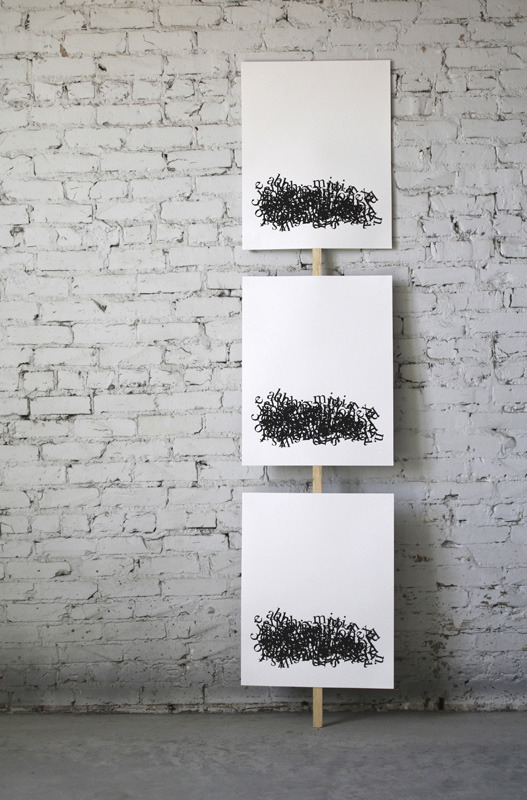
Surplus Space presents a series of individual works examining the materials, tools, and choreography of under-recognized forms of labor. An opening reception will be held Saturday, August 30th from 6-9pm. The exhibition runs through Saturday, September 20th.
Tori Abernathy presents Swing Shift, a series of duets responding to the movements of Downtown Clean and Safe public maintenance and sanitation workers. Dancers in the Swing Shift ensemble act when the Clean and Safe crew is off-duty. Workers and dancers alike respond to surges in waste production. Formalizing the interplay that already occurs between maintenance workers and unexpected zones of local activity, Swing Shift recasts these work patterns into a visual choreographic score and subsequent movement. Swing Shift is directed by Tori Abernathy, with choreographic score produced by Grace Poetzinger, costume design by Alyssa Beers, performances by Hannon Welch, Keyon Gaskin, Leah Wilmoth, Simone Wood, and the Clean and Safe Crew.Tori Abernathy is an artist, activist, curator, and writer from Miami living in Portland. She is founder and co-director of RECESS.
Anna Gray + Ryan Wilson Paulsen will be showing a small selection of pieces that play on the signage and choreography of roadside sign dancers. Gray and Paulsen are a collaborative artist team whose current interests center around reading and writing holes into the political and institutional predicaments that make life worse. Their projects have been seen at PDX Contemporary Art, The San Diego Museum of Art, Bemis Center for Contemporary Art, Publication Studio, and PICA's Time-Based Arts Festival.
Jabari Jordan-Walker is a writer and artist currently based in Portland, OR. Jordan-Walker’s work employs video and sculpture as meditative elements toward a wave of ephemeral objectives that architecture and sociopolitical policies produce between an individual's relationship within the aesthetic and bureaucratic function of architecture as an esoteric discipline. His work, Monks Bond, borrows its title from a masonry term describing a form of brickwork used in early 20th century Flemish architecture. Here it is used to characterize the site where Jordan-Walker will be using three bonded bricks recovered from a demolished Portland apartment complex as a relic to meditate on the “brick” as natural material. As a relationship toward an investigation on the Mount Angel Abbey Library, Alvar Aalto’s last project before his death, the performance which will conclude at Surplus Space with the construction of a brick wall, will ultimately be dictated by Jordan-Walker’s pilgrimage.
In an effort to put more of our resources to work Surplus Space will be debuting a new series of programming where guest curators are invited to curate the kitchen, hallway, and bathroom of Surplus. This month we welcome guest curators: Fo(u)rt collective who will be exhibiting: Rachel Mulder, Damon Sneed, and Braeden Cox.
#surplus space#portland art#fo(u)rt#Tori Abernathy#anna gray#ryan wilson paulsen#jabari jordan-walker#art#installation#labor#dance#video#peformance
0 notes
Photo

The culminating manifesto from Petra Fortes's "Fat Pedagogy", as part of the collaborative show, InFATuation, with Katie Piatt.
2 notes
·
View notes
Quote
…[P]rivilege nurtures blindness to those without the same privileges.
Chandra Talpade Mohanty in Feminism Without Borders: DecoIonizing Theory, Practicing Solidarity (via superiorconcha)
30 notes
·
View notes
